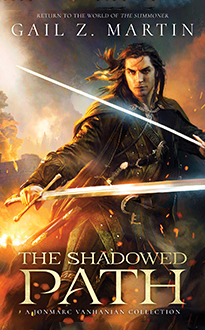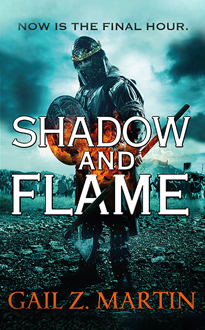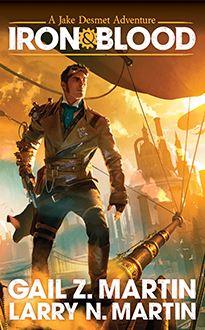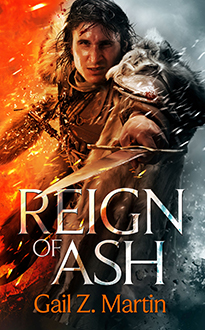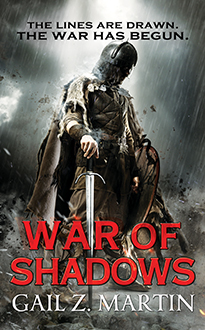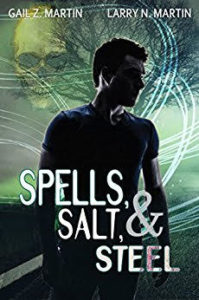by Gail Z. Martin
People are people–how much of a difference does a couple hundred of years make?
A lot–and less than you might think.
I write epic fantasy and urban fantasy, and co-authored with Larry N. Martin, steampunk. That’s a pretty broad time span, from roughly the late fifteenth century to the Victorian era, to modern day. The protagonists are all human, though some have enhanced abilities and immortality. And while being human doesn’t change over those centuries, other factors that influence how we define our humanity and our place in the universe certainly do.
It’s true that people remain much the same in their love, hate, ambition and failures. In every age, human beings fall in love, cherish their family and value friends, suffer betrayal and grief, take risks and make mistakes. Yet our times and our surroundings, as well as our world view, inform and constrain the choices that occur to us to consider, and shape the courses of action we believe are open to us.
My two epic fantasy series–The Chronicles of the Necromancer/Fallen Kings Cycle and The Ascendant Kingdoms Saga–take place in worlds other than our own, but with roughly the social structure and technology of late fifteenth century Western Europe. Monarchies and the nobility hold resources and power. Most people remain in or close to the villages where they were born. The lowest classes are bound to the land, and the highest classes owe fealty to a lord. Religion, alchemy and magic define how the cosmos function, and inform one’s view of where one fits in that cosmology. Duty to one’s king or liege lord supersedes individual choices.
Existential questions are seen through the lens of dedication to the gods and goddesses, or the teaching of clergy. Most peoples’ destiny is determined by birth and caste order, as well as whether or not they can do magic. Defying convention and culture is possible, but carries heavy social and personal consequences. A great deal of personal identity is determined by group identity: family, kingdom, religion, gender, ethnicity, caste, profession. Individualism as we think of it in modern times is a radical notion which threatens the status quo. Myriad social obligations to one’s family, clan, village, Guild, and kingdom define one’s use of time.
In the Iron & Blood Steampunk series, it’s the height of the Victorian age, and human self-confidence is at an all-time high. Science overcomes new obstacles and solves old mysteries every day, and it seems like just a matter of time until the secrets of the universe are laid bare. Technology emerges to meet every challenge, and inventions are proof of limitless creativity. Every day, in every way, the world is getting better and better.
And yet, cholera and malaria and typhus and Yellow Fever scourge cities. Life is good for the upper classes, and, well, ‘Dickensian’ for those who aren’t. Infant mortality and childbed fever kill civilians while thousands die in places like Gettysburg and Antietam. Colonialism and racism take a horrendous toll which will not be seen or grasped for another century. Victorians bow under the weight of grief, and spiritualism is on the rise, seeking the answers science can’t provide. Strict social etiquette and suffocating class and gender roles restrict and constrain, and being openly LGBTQ earns prison or worse. People are people, but the Victorian lens through which the self and the world is viewed is narrow and particular.
My Deadly Curiosities dark urban fantasy series is set in modern-day Charleston, SC with a secret coalition of mortals and immortals who eliminate supernatural threats and get haunted and cursed objects out of circulation. Cassidy is our modern contemporary, shaped from our current culture, yet her psychometry enables her to sense a whole additional reality as she reads the history of objects by touch, and her knowledge that the supernatural is real informs her choices and world view in a way that sets her apart from those who don’t share her secrets. Sorren, a nearly 600 year-old vampire, knows how to adapt to changing times, yet his reactions and insights are a product of six centuries of enculturation and observation, and he will never again be part of his own time period.
When you’ve come face to face with Voudon loas and ancient god-like beings and battled monsters and creatures right out of legend and myth, your existential framework is going to be a little bent. When you know that the things that go bump in the night are real, when you’ve saved the world a couple of times though no one knows it, that changes your reactions to what’s on the news, shifts your perspective about what’s important, and changes your priorities.
How are the characters different among the subgenres? For me, they’re a combination of the familiar and the unfamiliar. The aspects that make them human–love, hate, passion, the need for connection and the desire to complete a task, make a difference or right a wrong–make the characters identifiable and relatable. The aspects that are influenced by culture impart believability within the timeframe of the story and make them interesting and memorable, truly a part of their era. For an author, it’s a fun challenge to bring off a mix in a way that forges an emotional connection for the reader. And as a reader, when that mix is done well, it opens a gateway to experience different lives and different times.


